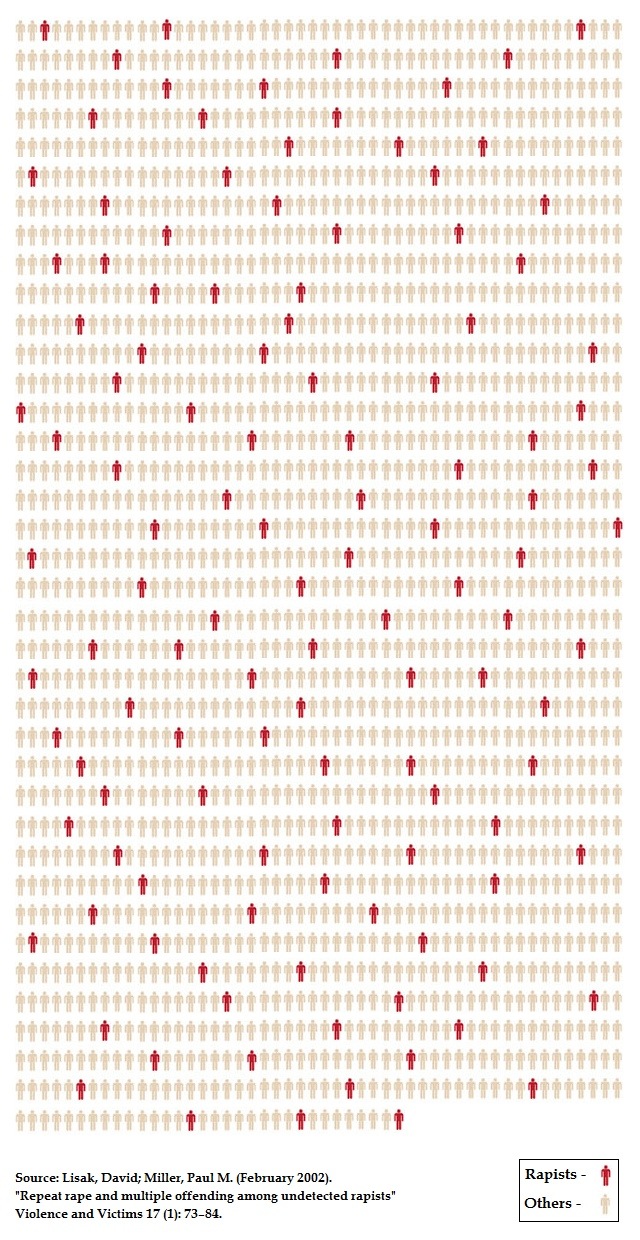
The above graphic shows what 120 rapists look like when distributed quasi-randomly among 1,882 male respondents from a mid-sized urban commuter university. The data are taken from this 2002 paper by Lisak and Miller.
These are self-reported rapists, who responded in the affirmative to one of the following four questions:
- Have you ever been in a situation where you tried, but for various reasons did not succeed, in having sexual intercourse with an adult by using or threatening to use physical force (twisting their arm, holding them down, etc.) if they did not cooperate?
- Have you ever had sexual intercourse with someone, even though they did not want to, because they were too intoxicated (on alcohol or drugs) to resist your sexual advances (e.g., removing their clothes)?
- Have you ever had sexual intercourse with an adult when they didn’t want to because you used or threatened to use physical force (twisting their arm; holding them down, etc.) if they didn’t cooperate?
- Have you ever had oral sex with an adult when they didn’t want to because you used or threatened to use physical force (twisting their arm; holding them down, etc.) if they didn’t cooperate?
Of the 120 total self-admitted rapists or would-be rapists, 21 admitted attempted rape (Q1), 97 admitted to rape by intoxication (Q2), 11 admitted to rape by force or threats (Q3), and 12 admitted to oral sex by force or threats (Q4).
It’s probably fair to assume that the actual rate of rapists (including would-be rapists) in the general population is somewhat higher than Lisak and Miller found here, because they were relying on men to honestly self-report criminal behavior given assurance of anonymity. Probably some respondents were not only serial rapists but also accomplished liars, and thereby go undetected not only by the criminal justice system but also by academic researchers. So the roughly 1-in-16 figure should be thought of as a lower bound.
Probably the most useful finding here is that alcohol and drugs are by far the most favored means of vitiating consent among those who admit to attempting or committing rape, and that this is part of a larger pattern of victimization wherein victims are unlikely to report and prosecutors are unlikely to prosecute. See page 81 of the report for some practical policy changes which should help the justice system respond to such so-called “difficult to prosecute” cases.
ETA: Inspired by this original graphic, but of course you’ve probably already guessed that.
